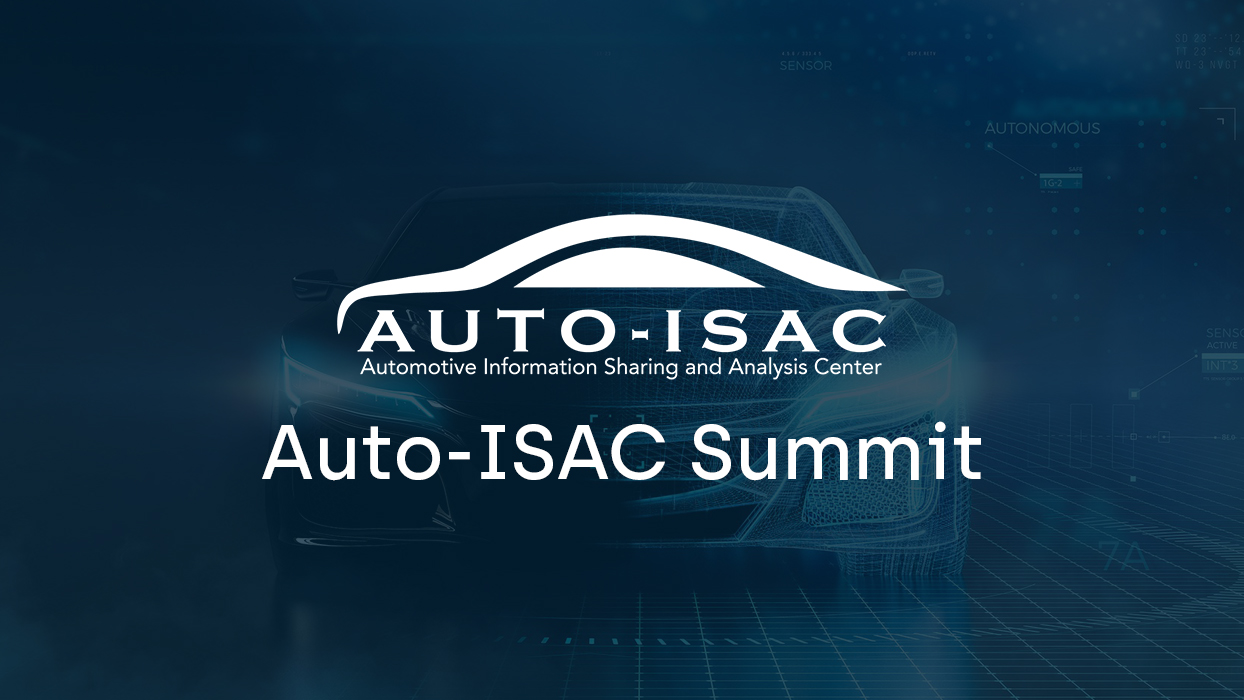A Changing Landscape in Automotive Cybersecurity
Earlier this month, I had the opportunity to attend the Auto ISAC European Summit in Sweden. Hosted at the iconic Volvo Hallen, the event brought together some of the brightest minds in automotive cybersecurity.
This wasn’t just another industry meetup. It felt like a moment of reckoning. Ideas clashed, assumptions were challenged, and somewhere in the flurry of conversations, a new tone began to set in—urgent, realistic, and collaborative.
I left with insight, yes. But also with questions, wake-up calls, and a renewed sense of purpose.
Building Resilience Across the Supply Chain
One phrase echoed throughout the summit: resilience has to be holistic.
Security can’t be stitched together from bits and pieces. It needs to be baked in, everywhere. From the tiniest chip inside the vehicle to the cloud services syncing your driving data. That might sound ambitious, but it’s not optional anymore.
What Consumers Think: A Cybersecurity Wake-Up Call
One stat in particular hit me hard: 7 in 10 people are hesitant to buy an autonomous vehicle because of cybersecurity concerns.
Let that sink in. Even with all the innovation, design, and marketing, fear is still in the driver’s seat.
And honestly? I get it. If you can’t trust the systems steering your car, how can you trust the car itself?
China’s Regulatory Leap
One of the most thought-provoking insights came from the East.
China isn’t following the rules; it’s rewriting them. While Western regulators tend to suggest what should be done, Chinese authorities are laying out exactly how to do it—step by step.
At first glance, that might feel restrictive. But there’s clarity in that rigidity. And it’s reshaping the playing field.
From Software-Defined to Security-Defined Vehicles
Yes, we’ve all heard the term “software-defined vehicles” (SDVs) tossed around. But here’s the shift: it’s no longer just about cool features and seamless updates.
It’s about security.
There’s a new current running through the conversations: the need for common security architectures. Not one-off fixes. Not vendor-specific patches. A shared foundation.
The Hacker Who Stole the Show
And then came that panel.
An ethical hacker took the stage—a Pwn2Own winner. And let’s just say he didn’t hold back. While executives discussed how “mature” their systems had become, he reeled off vulnerabilities like:
- Hardcoded cryptographic keys
- Failure to enforce signature checking for applications
- Shared hardware-level keys
There was a moment of silence. A sort of collective “yikes.”
His point? Brutal, but necessary: If you can’t trust the data your vehicle is generating, nothing else matters.
Blind Spots and Missing Voices
Something strange stood out to me: not a single Chinese cybersecurity vendor at the summit.
Considering China’s dominance in EV production and innovation, their absence felt… glaring.
For Trustonic, it confirmed that we’re standing in a rare and valuable position bridging these global divides. We understand the nuances of East and West. And we help our partners navigate both with confidence.
Time to Flip the Script
Here’s something I said during the event that really seemed to resonate: “We used to sell Chinese OEMs on our strength in Europe. Now, we can sell to Europe on our strength in China.”
However, that kind of credibility isn’t earned overnight. It’s the result of relentless engineering, focusing on first calls support, trust-building, and showing up where it matters.
For OEMs looking to grow across continents, that trust travels with us.
Explore With Us
The Auto ISAC Summit wasn’t about patting backs. It was about looking looking at how to continue evolving and staying ahead of the bad guys. Yes, the industry is progressing. But there is a danger of overconfidence and that’sdangerous. We need more humility, more collaboration and sharing, and to recognise that one vulnerable vehicle is bad news for the whole industry.
At Trustonic, we’re not here for short-term fixes. We’re here for the long haul. Which is wht we have been building our secure OS for more than a decade. We’ve always recognised that in the connected car ecosystem you need security across the value chain from chip to cloud. Its why we focus on securing the lowest levels of the stack—because in our eyes having robust foundations to build on is what counts the most. Knowing that you can trust the vehicle, trust the data and ultimately provide the highest level of protection to the vehicle users.
While it is invisible to the end-user, but indispensable to every OEM that cares about trust, uptime, and compliance.
We recognised early that China would become a powerhouse in automotive and that’s why today we are already entrenched in the Chinese automotive ecosystem. Our technology meets the demands of the Chinese regulations and that’s why we are already protecting millions of Chinese EVs from the major Chinese OEMs to those focused on new market segments. It’s proof that we don’t just adapt. We lead.
That’s our sweet spot. At Trustonic, our Secure Platform isn’t just robust—it’s ready to scale with the entire vehicle lifecycle regardless of where you’re manufacturing or which markets you’re selling into.
If you’re building the next generation of vehicles, or redefining mobility standards, or just trying to sleep better at night knowing your systems are secure—I invite you to explore with us.
Let’s make trust tangible. Together.

